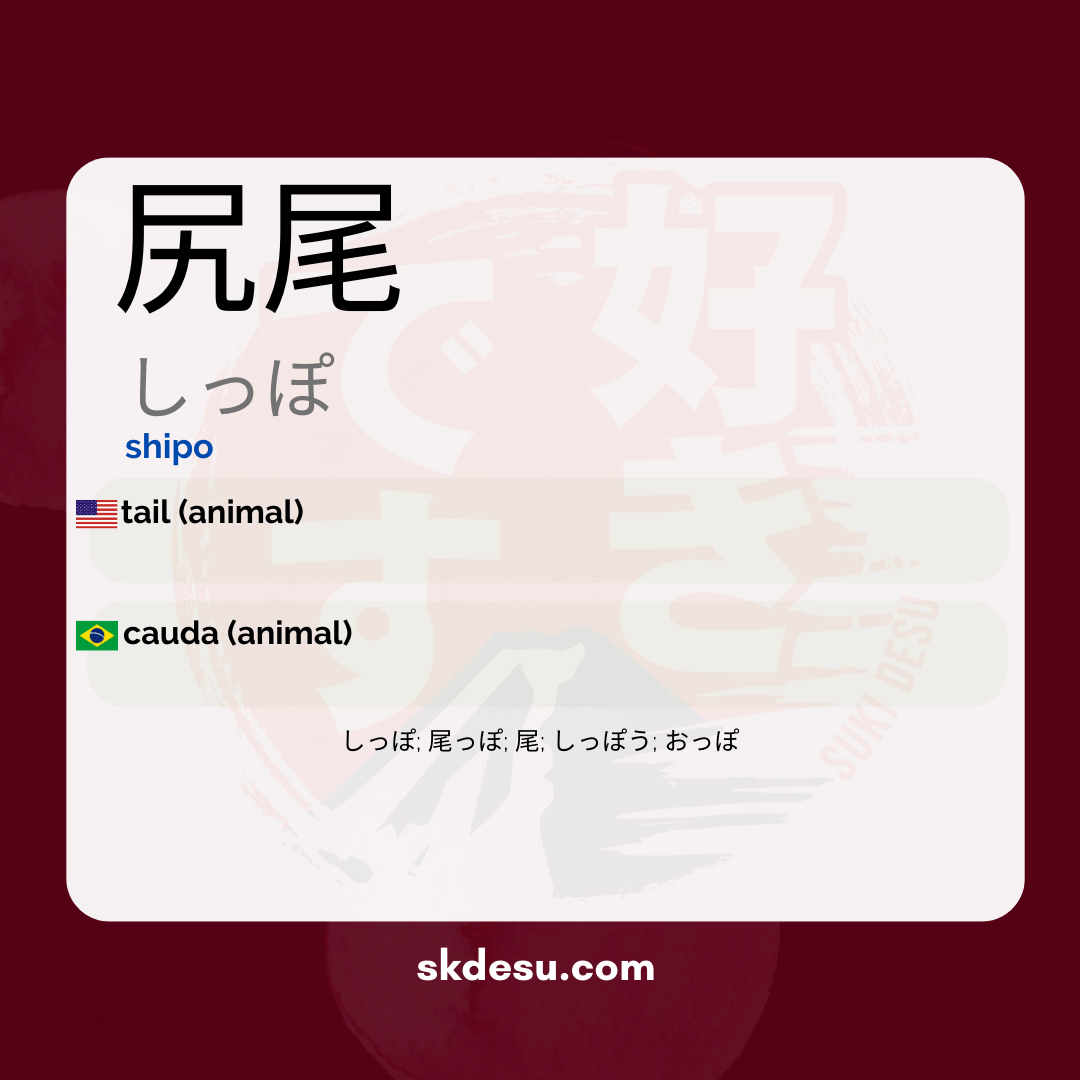Translation and Meaning of: 尻尾 - shipo
If you have ever watched an anime or read a manga, you have probably come across the word 尻尾 (しっぽ). This Japanese expression, which means "tail," frequently appears in contexts involving animals, anthropomorphic characters, and even in metaphorical situations. In this article, we will explore the meaning, origin, and cultural uses of this word, as well as tips for memorizing it effectively.
In addition to being a common term in everyday Japanese, 尻尾 carries interesting nuances that can enrich the vocabulary of language learners. Let's analyze how it is written in kanji, its pronunciation, and practical examples of usage. If you want to better understand this word and how to use it correctly, keep reading!
Meaning and writing of 尻尾
The word 尻尾 (しっぽ) refers to the tail of an animal, whether it is long, short, furry, or smooth. It is a term widely used in Japan, both in everyday conversations and in works of fiction. The kanjis that make up the word are 尻 (which means "rear" or "end") and 尾 (which represents "tail"). Together, they form a clear idea of what the word describes.
It is worth noting that 尻尾 is often written in hiragana (しっぽ) in informal texts or when the author wants to convey a more relaxed tone. This flexibility in writing demonstrates how the Japanese language can adapt to different contexts while keeping the meaning intact.
Origin and curiosities about the word
The etymology of 尻尾 traces back to ancient Japanese, where the combination of the kanjis 尻 and 尾 was already used to describe the hind part of animals. Interestingly, the reading しっぽ is an example of rendaku, a linguistic phenomenon where the initial sound of a word changes to facilitate pronunciation—in this case, the "t" in 尾 (お) turns into "p" in しっぽ.
An interesting fact is that, in Japanese folklore, creatures like kitsune (foxes) and tanuki (raccoon dogs) are often depicted with tails, symbolizing wisdom or trickery. These representations reinforce the cultural significance of the word 尻尾, which goes beyond its literal meaning.
How to use 尻尾 in daily life
In day-to-day conversations, 尻尾 can be used to describe the tail of a pet, as in "猫のしっぽがふわふわです" (The cat's tail is fluffy). Additionally, in more metaphorical contexts, the word can indicate that someone is "showing their tail," meaning revealing their true intentions after trying to hide them.
For Japanese learners, a good memorization tip is to associate the kanji 尾 with other related terms, such as 尾行 (びこう, "pursuit") or 末尾 (まつび, "end"). This technique helps to solidify not only the word itself but also its usage in different situations.
Vocabulary
Expand your vocabulary with related words:
Synonyms and similar words
- しっぽ (shippo) - Tail (usually refers to the tail of an animal).
- 尾っぽ (oppo) - Tail (colloquial use; can refer to a tail in a more affectionate or casual way).
- 尾 (o) - Tail (a more formal or technical term, used in specific contexts).
- しっぽう (shippou) - Tail (less common variant, may refer to tail in a more specific or technical context).
Related words
Romaji: shipo
Kana: しっぽ
Type: noun
L: jlpt-n2, jlpt-n1
Translation / Meaning: tail (animal)
Meaning in English: tail (animal)
Definition: A tail is a long appendage that an animal has at the back of its body.
Quick Access
- Vocabulary
- Writing
- Sentences
How to Write in Japanese - (尻尾) shipo
See below a step-by-step guide on how to write the word by hand in Japanese. (尻尾) shipo:
Example Sentences - (尻尾) shipo
See below some example sentences:
Neko no shippo wa totemo kawaii desu
The cat's tail is very cute.
- 猫 (neko) - cat
- の (no) - Possessive particle
- 尻尾 (shippo) - Tail
- は (wa) - Topic particle
- とても (totemo) - very
- かわいい (kawaii) - fofo, bonito
- です (desu) - Verb to be/estar in the present
Other Words of this Type: noun
See other words from our dictionary that are also: noun

